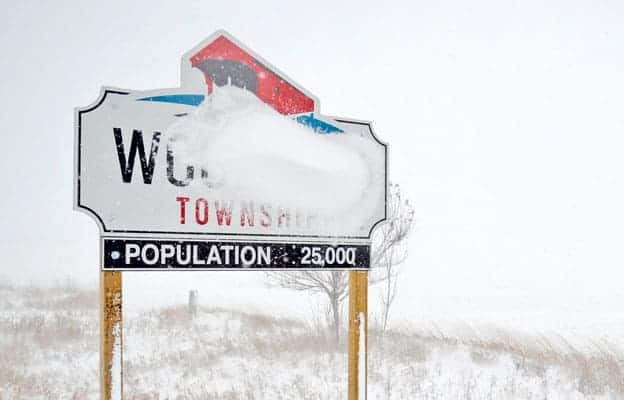This week’s snow was unwelcomed, but had no impact on the township’s winter control budgets, which took a mixed hit over the season that was.
Each year, municipalities put aside funds in their yearly budget, predicting just how much they may need to ensure cleanup can take place after each snowfall. Of course, being able to look ahead and see just how treacherous the next winter could be is as difficult as trying to guess the next lottery numbers. Nevertheless, municipalities like Woolwich and Wellesley Townships prepare each year for the potential storm ahead.
In Wellesley, Chris Cook, director of public works, says things are done a little differently with their snow budgets compared to other municipalities.
“Our winter maintenance budget is basically strictly material, so our wages and our equipment don’t come out of our winter maintenance budget. So that $140,000 is strictly material. [This covers road] salt and things like that,” said Cook.
“We take our eight public work staff and we figure out what it’s going to cost us for the whole year to pay at the regular rate. And that’s what our budget line looks like. So, it’s not split out for summer and winter so for the actual plowing itself… five months of our wages line more or less is our winter budget.”
He says the wages line totals $686,000, figuring that the “winter season” lasts about five months and the “summer season” is about seven. There are also premiums associated with winter work such as running a wing on the plow trucks and working off shifts, Cook added.
A rough estimate for the cost associated with the five months of winter works comes in at $285,833.
In Woolwich Township the budgeted amount for winter control in the 2020 budget was $708,700. This included staff costs for labour for removing snow ($46,800), ice ($13,700) and applying salt/sand ($51,500), totalling $112,000. Equipment costs were budgeted at $281,400, while the purchasing of operating materials such as salt and sand was budgeted at $237,400.
Director of finance Richard Petherick said expenses for 2020 winter control came in over budget at $816,259.
“At the start of the winter season back in January/ February of last year, it was a bit of a rough start, even into March. So, I started to become a little more hopeful that we make it very close to ending up on budget or maybe just a little bit over, and then the tail-end of December hit and that just threw us right over,” said Petherick.
He says while the labour and equipment costs came in either just under budget or a tad over, it was the material costs which came in well over budget.
“We had $112,000 [in labour costs budgeted] and we ended the year just over $107,000. So, we actually were a little under budget on our labour. The next line would be the equipment cost so that is the cost that we incur for running the trucks, fuel, maintenance and all that, and we were pretty much on budget for that with a budget of $281,400, and we ended the year just shy of $282[000]. Our harder part was really when we started getting into material… I think that was almost $60,000 greater than what we budgeted for.”
Cook says the snow event declaration introduced this year went well. While they only had to issue two – no warnings were issued.









